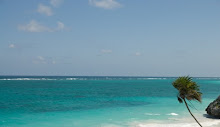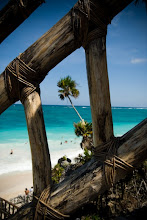Sunday, August 14, 2011
Coming Back to Blogger!
Monday, April 19, 2010
Sunday, April 18, 2010
Salsa Dancing Video
Salsa dancing is a huge part of Latin culture. I love this video from So You Think You Can Dance.
I'm reading:
Wednesday, April 14, 2010
Dominican Republic: Juan Pablo Duarte
Juan Pablo Duarte
La TrinitariaOn July 16, 1838, during the festival of La Senora del Carmen, he met with eight other men and formed La Trinitaria–a secret society whose sole purpose was to bring about the independence of the Dominicans and form a free republic. In reading historical accounts of this night, it is amazing to me how one person can inspire and ignite such belief and dedication-to-purpose in others. Duarte “spoke as if from heaven” and each man took the oath to give all he had, even his life, to the cause–sealing the oath with “blood from [his] vein”.
La Bandera
Another thing that I find fascinating about this night is the clear and precise vision that Duarte had of the future flag of the Republica Dominicana. He described the flag as blue and red (opposing colors AND the colors of the Haitian flag) with a white cross in the middle which represented peace and redemption.
Dominican Republic Flag
Revolutionary Minds
The idea of people who come up with “new” ideas that go against the grain, is a fascinating one for me. The American Revolution is inspiring on many levels, but Latin America and it’s revolutionaries like Juan Pablo Duarte, Simon Bolivar, and Jose San Martin offer views into other revolutionary minds. And it’s not only the men that are “revered” that I find fascinating, but others, especially Che Guevara, whose psyche interests me.
In the end, something that I recognize in all the great revolutionary minds is intelligence (or enlightenment), an intense inner-drive, and an almost-grand-scale self-bravado. Interesting.
I'm reading:
Labels:
Bandera,
Dominican Republic,
Duarte
Monday, April 12, 2010
Another Great Mahahual Trip Report
I was recently led to this Mahahual trip report on InTheRoo.com written by "Libby" in August 2008. What I really love about this trip report are the details! From the pictures of the drive down to Mahahual to the public bathrooms in-town, Libby's trip report is very informative and especially helpful for those of us planning a trip to Mahahual. Thank you, Libby, for sharing your Mahahual experience.
(Photo from Libby's trip report on intheroo.com)
Labels:
forum,
intheroo,
mahahual,
trip report
Wednesday, April 7, 2010
Discover Mahahual - Trip Friend
I want to introduce everyone to Ariana! She is coming to Mahahual with me in May. (YAY!) Ariana is a kindred spirit -- even though we are a couple of generations apart, we are spirit-twins. :) I am so excited to be traveling with her, again. She makes me laugh and keeps me young.
I'm reading:
Ariana in the middle...
Ariana - left-back...
Ariana - on the right...
Ariana - front-left...
Ariana - on the right...
Ariana - in the middle...
I'm reading:
Tuesday, April 6, 2010
New World Architecture
Renaissance
This type of architecture was sensual and exhibited elements of harmony and equilibrium. It was also very symmetric and proportional which translated into a type of peaceful serenity.
Renaissance Architecture - Merida Cathedral, Mexico
Baroque
The Baroque architecture in the New World was extravagant, ornamental, and full of contrasts and oppositions. This was a period in time when there was a definite tension exhibited between worldly things and religious things.
Baroque Architecture - the St Francis Xavier Church in Tepotzotlán, Mexico
Personally, I prefer the more serene Renaissance style. However, there is definitely something to be appreciated in the gaudy Baroque, as well.
I'm reading:
Labels:
architecture,
baroque,
new world,
renaissance
Subscribe to:
Posts (Atom)
























